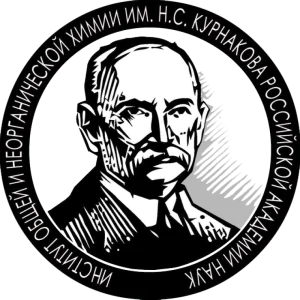Design Principles for Organic Small Molecule Hole-Transport Materials for Perovskite Solar Cells: Film Morphology Matters
Alina F Latypova
1
,
Polina K Sukhorukova
2
,
Nadezhda K Kalinichenko
2
,
Petr M Kuznetsov
1
,
Sergey M. Aldoshin
1
,
Pavel A. Troshin
1, 3
,
Publication type: Journal Article
Publication date: 2022-02-22
scimago Q1
wos Q2
SJR: 1.378
CiteScore: 10.2
Impact factor: 5.5
ISSN: 25740962
Materials Chemistry
Electrochemistry
Electrical and Electronic Engineering
Energy Engineering and Power Technology
Chemical Engineering (miscellaneous)
Abstract
High-efficiency n–i–p perovskite solar cells generally incorporate organic hole-transport layer materials such as spiro-OMeTAD or PTAA, which have intrinsically low charge carrier mobility and therefore require doping to improve transport properties. However, using dopants is known to affect badly the operational stability of perovskite solar cells. Therefore, the development of suitable dopant-free hole-transport materials is the critical issue for realizing perovskite solar cells with high efficiency and long operational lifetimes. Herein, a series of small molecules with triazatruxene, benzodithiophene, triphenylamine, and dithienosilole electron donor core units were designed and explored as solution-processed dopant-free hole-transport materials for perovskite solar cells. The best performance has been obtained using the triazatruxene-based molecule TAT-2T-CNA with terminal alkyl cyanoacetate groups and a 2,2′-bithiophene π-conjugated bridge, which has enabled device efficiency of 20.1% with negligible hysteresis, along with a substantially improved VOC and FF values as compared to the reference devices assembled with PTA as a hole-transport material. The superior performance of TAT-2T-CNA is attributed to the optimal optoelectronic properties of this material and, most importantly, defectless film morphology. Using scanning near-field infrared microscopy (IR-SNOM) technique was shown to be particularly useful for the detection and visualization of defects in thin films of hole-transport materials, which strongly correlate with the device performance. The results obtained in this work are expected to provide new insights facilitating the rational design of efficient dopant-free hole-transport materials for efficient and stable perovskite solar cells.
Found
Nothing found, try to update filter.
Found
Nothing found, try to update filter.
Top-30
Journals
|
1
2
3
4
5
6
|
|
|
Sustainable Energy and Fuels
6 publications, 14.63%
|
|
|
ACS Applied Energy Materials
5 publications, 12.2%
|
|
|
Dyes and Pigments
2 publications, 4.88%
|
|
|
Advanced Functional Materials
2 publications, 4.88%
|
|
|
Russian Chemical Reviews
2 publications, 4.88%
|
|
|
Mendeleev Communications
2 publications, 4.88%
|
|
|
RSC Advances
2 publications, 4.88%
|
|
|
Synthetic Metals
2 publications, 4.88%
|
|
|
Materials
1 publication, 2.44%
|
|
|
Energy and Environmental Science
1 publication, 2.44%
|
|
|
Chemical Communications
1 publication, 2.44%
|
|
|
Small
1 publication, 2.44%
|
|
|
Small Science
1 publication, 2.44%
|
|
|
Angewandte Chemie
1 publication, 2.44%
|
|
|
Angewandte Chemie - International Edition
1 publication, 2.44%
|
|
|
Journal of Molecular Structure
1 publication, 2.44%
|
|
|
EcoMat
1 publication, 2.44%
|
|
|
Nature Communications
1 publication, 2.44%
|
|
|
Nature Reviews Materials
1 publication, 2.44%
|
|
|
ACS Omega
1 publication, 2.44%
|
|
|
Langmuir
1 publication, 2.44%
|
|
|
Journal of Power Sources
1 publication, 2.44%
|
|
|
Nanomaterials
1 publication, 2.44%
|
|
|
Solar Energy Materials and Solar Cells
1 publication, 2.44%
|
|
|
Frontiers in Chemistry
1 publication, 2.44%
|
|
|
Progress in Photovoltaics: Research and Applications
1 publication, 2.44%
|
|
|
1
2
3
4
5
6
|
Publishers
|
2
4
6
8
10
|
|
|
Royal Society of Chemistry (RSC)
10 publications, 24.39%
|
|
|
Wiley
8 publications, 19.51%
|
|
|
Elsevier
7 publications, 17.07%
|
|
|
American Chemical Society (ACS)
7 publications, 17.07%
|
|
|
MDPI
2 publications, 4.88%
|
|
|
Autonomous Non-profit Organization Editorial Board of the journal Uspekhi Khimii
2 publications, 4.88%
|
|
|
OOO Zhurnal "Mendeleevskie Soobshcheniya"
2 publications, 4.88%
|
|
|
Springer Nature
2 publications, 4.88%
|
|
|
Frontiers Media S.A.
1 publication, 2.44%
|
|
|
2
4
6
8
10
|
- We do not take into account publications without a DOI.
- Statistics recalculated weekly.
Are you a researcher?
Create a profile to get free access to personal recommendations for colleagues and new articles.
Metrics
41
Total citations:
41
Citations from 2025:
18
(43.9%)
Cite this
GOST |
RIS |
BibTex |
MLA
Cite this
GOST
Copy
Latypova A. F. et al. Design Principles for Organic Small Molecule Hole-Transport Materials for Perovskite Solar Cells: Film Morphology Matters // ACS Applied Energy Materials. 2022. Vol. 5. No. 5. pp. 5395-5403.
GOST all authors (up to 50)
Copy
Latypova A. F., Emelianov N. A., Balakirev D. O., Sukhorukova P. K., Kalinichenko N. K., Kuznetsov P. M., Luponosov Y. N., Aldoshin S. M., Ponomarenko S. A., Troshin P. A., Frolova L. A. Design Principles for Organic Small Molecule Hole-Transport Materials for Perovskite Solar Cells: Film Morphology Matters // ACS Applied Energy Materials. 2022. Vol. 5. No. 5. pp. 5395-5403.
Cite this
RIS
Copy
TY - JOUR
DO - 10.1021/acsaem.1c03119
UR - https://doi.org/10.1021/acsaem.1c03119
TI - Design Principles for Organic Small Molecule Hole-Transport Materials for Perovskite Solar Cells: Film Morphology Matters
T2 - ACS Applied Energy Materials
AU - Latypova, Alina F
AU - Emelianov, Nikita A
AU - Balakirev, Dmitry O.
AU - Sukhorukova, Polina K
AU - Kalinichenko, Nadezhda K
AU - Kuznetsov, Petr M
AU - Luponosov, Yuriy N.
AU - Aldoshin, Sergey M.
AU - Ponomarenko, Sergey A.
AU - Troshin, Pavel A.
AU - Frolova, Lyubov A
PY - 2022
DA - 2022/02/22
PB - American Chemical Society (ACS)
SP - 5395-5403
IS - 5
VL - 5
SN - 2574-0962
ER -
Cite this
BibTex (up to 50 authors)
Copy
@article{2022_Latypova,
author = {Alina F Latypova and Nikita A Emelianov and Dmitry O. Balakirev and Polina K Sukhorukova and Nadezhda K Kalinichenko and Petr M Kuznetsov and Yuriy N. Luponosov and Sergey M. Aldoshin and Sergey A. Ponomarenko and Pavel A. Troshin and Lyubov A Frolova},
title = {Design Principles for Organic Small Molecule Hole-Transport Materials for Perovskite Solar Cells: Film Morphology Matters},
journal = {ACS Applied Energy Materials},
year = {2022},
volume = {5},
publisher = {American Chemical Society (ACS)},
month = {feb},
url = {https://doi.org/10.1021/acsaem.1c03119},
number = {5},
pages = {5395--5403},
doi = {10.1021/acsaem.1c03119}
}
Cite this
MLA
Copy
Latypova, Alina F., et al. “Design Principles for Organic Small Molecule Hole-Transport Materials for Perovskite Solar Cells: Film Morphology Matters.” ACS Applied Energy Materials, vol. 5, no. 5, Feb. 2022, pp. 5395-5403. https://doi.org/10.1021/acsaem.1c03119.






















